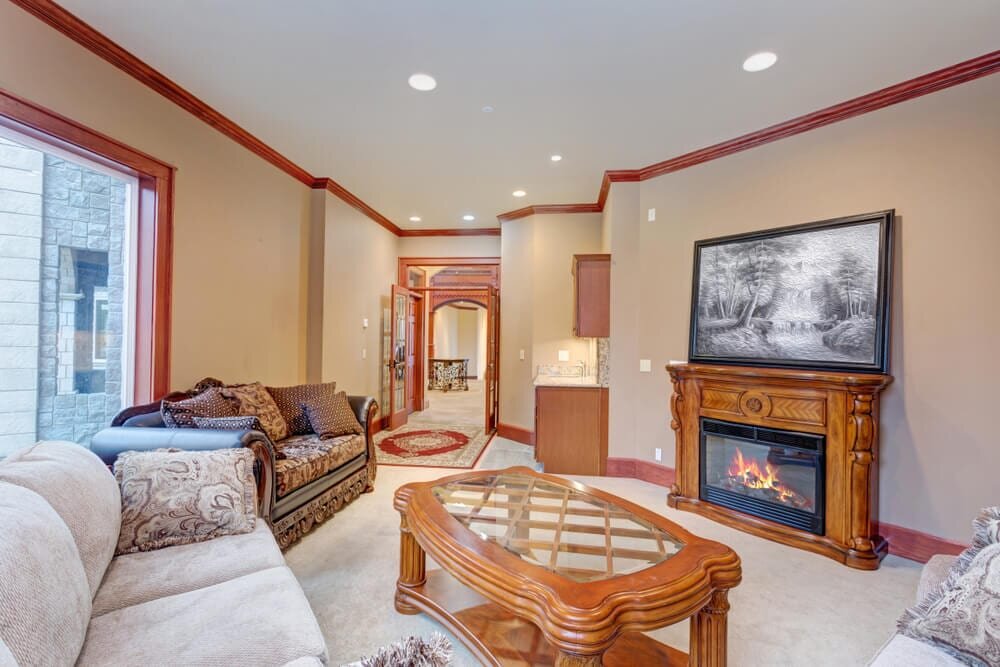Trim- It's All About The Size: Updated
I recently worked with a client who had questions regarding the trim in her home:“We are currently redoing the exterior of our house to have more craftsman look. So, now that we are at the point of putting trim around new windows and doors, we are starting to be forced to know what we will do with the interior. We currently love the wood floors and the style of the new front door, despite that it's darker than we anticipated.I'm hoping you are comfortable as one designer's opinion of what would look best if we want to continue integrating craftsman style, yet contemporary mixed in, into the inside. Here is what we are debating: 1. White trim or stained trim (I think white will brighten and not make it so much brown as we currently have going on). If we do wide white trim (craftsman look above doors), do we do white doors or attempt to re-stain our doors. Or, buy new doors - white or stained? “
My first thought, before even considering the color of the new trim, was the size of the baseboard that currently exists. Looking at the photo, the molding looks a bit too small and out of proportion with the wall. Just like in this photo:
These are instances where I actually think stained trim gets a bad rap not because of it’s color, but because it is too tiny for the room. For a time, builders were using a smaller height for baseboard trim in the new builds which were only an average height of 2-3”. This smaller trim was not part of any historic molding:
Maybe it was just easier and less expensive to install for the builders? I’m not quite sure of the reason, but it’s a relatively easy update to make if you would like to make this change. Updating your baseboard trim is a quick way to update any room in your home. When deciding which size baseboard to go with, my standard rule of thumb is to have at least a 5 1/4” baseboard, white or stained, for a standard 8 ft. high ceiling. If you do not want to go through the hassle or mess of ripping out the old molding to replace with a larger size, there is a product called Rapidfit, sold at Lowe’s.
The larger molding fits right over the old molding. Pretty good idea to check into if you are thinking of changing all of your trim. Using a wider, heftier baseboard can really make a difference in your home design, as you can see below:
A general rule of thumb for your baseboards is the 7 percent rule — they should equal 7 percent of the overall height of your room. So, if you have 8-foot ceilings, your baseboards will look best at around 7 inches high. If the more ornate, carved style of baseboards is cost-prohibitive, consider a flat panel and add a strip of cove molding to the top and half-inch, quarter-round base shoe to the bottom. n general, vertical trim elements, such as door and window casings, should be smaller than your baseboards. Think 50 percent of your baseboards — in the above case, 3 ½ inches. Your crown molding should be scaled to be smaller than your baseboards and appropriate to the height of your ceilings. In lower ceilings or simpler-style homes, crown moldings may be entirely unnecessary. Lastly, don’t forget your entries transitioning between rooms — they can receive the same treatments as your doors.
In summary, my advice on baseboard size is to use larger, taller trim boards for the best look. To answer the client’s question about the trim color - if she is going to use wide white trim above the doorways and is planning on changing the trim anyway, I would definitely go with the white for a fresher, new look. If she does decide to proceed with the white trim, my recommendation would be to either paint the doors white or purchase new white doors (whichever best fits her budget). Don’t you think it makes a big visual difference?
Hope this has helped!






